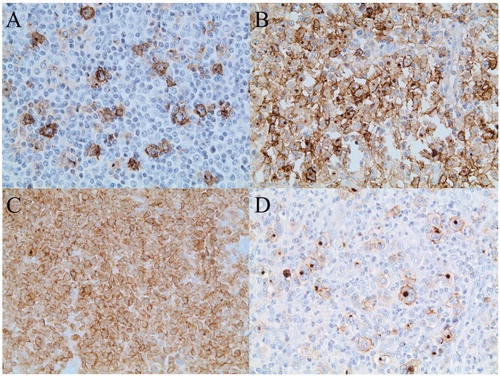Figures & data
Table 1. Clinicopathological characteristics of PTLD cases by CD30 status.
Figure 1. Immunohistochemical staining of CD30 in PTLD after solid organ transplantation. (A) Polymorphic PTLD with approximately 10% CD30+ cells. (B) Diffuse large B-cell lymphoma, non-germinal center type, with approximately 80% CD30+ tumor cells. (C) Anaplastic large cell lymphoma with 100% CD30+ tumor cells D) Hodgkin lymphoma-like PTLD with 100% CD30+ Hodgkin and Reed/Sternberg (HRS) cells.

Figure 2. Overall survival in PTLD after solid organ transplantation by CD30-status overall (A), in the subgroup of DLBCL (B), and the subgroup of T-cell PTLD (C).

Table 2. Uni- and multivariate analysis of CD30 and overall survival with the use of Cox proportional hazards regression, adjusting for age, sex, and stage according to Ann Arbor.

